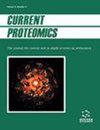利用免疫优势蛋白构建多表位抗原用于沙眼衣原体血清学诊断:一种计算机方法
IF 0.5
4区 生物学
Q4 BIOCHEMICAL RESEARCH METHODS
引用次数: 0
摘要
背景:衣原体病是世界范围内广泛存在的细菌性感染。血清学检测是昂贵的,此外,内在抗原会引起交叉反应,使诊断过程变得困难。多表位蛋白抗原是一种新型的、有潜力的诊断标志物,具有更准确、更廉价的诊断能力。因此,本研究的主要目标是设计一种新的蛋白疫苗,该疫苗包括来自沙眼衣原体的MOMP、ompA和Pgp3D三种蛋白的多个显性免疫B细胞表位。使用EMBOSS服务器鉴定抗原性最高的区域。使用BCPRED、ABCpred和Bepipred服务器确定线性B细胞表位。抗原性最高的表位通过EAAAK连接。结果:从MOMP、ompA和Pgp3D中分别筛选出2个表位。这些表位通过EAAAK连接子相互连接。利用ElliPro对设计的B细胞多表位的空间结构进行预测,得到3个(0.592)、16个(0.76)、36个(0.578)和37个(0.734)残基。选择RaptorX模型1为最佳结构。在该模型中,ERRAT质量、ProSA-web z-score和Verify3D分别为83.1169、- 5.17和84.62%,PASS得分。Ramachandran图显示,86.093%的氨基酸残基位于有利区域。为了达到最高水平的蛋白表达,设计的多表位用Genscript服务器反翻译,并在大肠杆菌中克隆。达到最高表达水平,CAI评分为0.91。基因GC含量为51.98%,低频密码子贡献率为0%。结论:所设计的构建体能够在衣原体患者血清样本中对沙眼衣原体进行高灵敏度和特异性的鉴定。然而,需要进一步的实验研究来最终证实。本文章由计算机程序翻译,如有差异,请以英文原文为准。
Developing Multi-epitope Antigen Construct from Immunodominant Proteins for Serological Diagnosis of Chlamydia trachomatis: An In Silico Approach
Background: Chlamydiasis is a widespread bacterial infection in the world. Serological tests are expensive, and in addition, intrinsic antigens can cause cross-reactions and make the diagnosis process difficult. Multi-epitope protein antigens are novel and potential diagnostic markers that have the capability of more accurate and cheaper diagnosis. Therefore, in this study, the main goal is to design a new protein vaccine, including multiple epitopes of B cells with dominant immunity from three proteins named MOMP, ompA and Pgp3D from C. trachomatis Methods: The amino acid sequences were obtained from the UniProt database. The areas with the highest antigenicity were identified using the EMBOSS server. Linear B cell epitopes were determined using BCPRED, ABCpred, and Bepipred servers. Epitopes with the highest antigenicity were connected using the EAAAK linker. Results: Two epitopes from MOMP, two from ompA, and one from Pgp3D were selected. These epitopes were connected to each other with the EAAAK linker. Three residues (0.592), 16 residues (0.76), 36 residues (0.578), and 37 residues (0.734) were obtained from the prediction of the spatial structure of the B cell multiple epitopes designed with ElliPro. Model 1 of RaptorX was selected as the best structure. In this model, the ERRAT quality, ProSA-web z-score, and Verify3D were 83.1169, - 5.17 and 84.62% with PASS score, respectively. Moreover, the Ramachandran plot showed that 86.093% of the amino acid residues were located in the favored region. To achieve the highest level of protein expression, the designed multi-epitope reverse-translated with the Genscript server and was cloned in E. coli. The highest level of expression was achieved, and a CAI score of 0.91 was reported. The gene GC content was 51.98%, and the contribution of low-frequency codons was 0%. Conclusion: The results confirmed that the designed construct could identify C. trachomatis with high sensitivity and specificity in serum samples of patients with chlamydiasis. However, further experimental studies are needed for final confirmation.
求助全文
通过发布文献求助,成功后即可免费获取论文全文。
去求助
来源期刊

Current Proteomics
BIOCHEMICAL RESEARCH METHODS-BIOCHEMISTRY & MOLECULAR BIOLOGY
CiteScore
1.60
自引率
0.00%
发文量
25
审稿时长
>0 weeks
期刊介绍:
Research in the emerging field of proteomics is growing at an extremely rapid rate. The principal aim of Current Proteomics is to publish well-timed in-depth/mini review articles in this fast-expanding area on topics relevant and significant to the development of proteomics. Current Proteomics is an essential journal for everyone involved in proteomics and related fields in both academia and industry.
Current Proteomics publishes in-depth/mini review articles in all aspects of the fast-expanding field of proteomics. All areas of proteomics are covered together with the methodology, software, databases, technological advances and applications of proteomics, including functional proteomics. Diverse technologies covered include but are not limited to:
Protein separation and characterization techniques
2-D gel electrophoresis and image analysis
Techniques for protein expression profiling including mass spectrometry-based methods and algorithms for correlative database searching
Determination of co-translational and post- translational modification of proteins
Protein/peptide microarrays
Biomolecular interaction analysis
Analysis of protein complexes
Yeast two-hybrid projects
Protein-protein interaction (protein interactome) pathways and cell signaling networks
Systems biology
Proteome informatics (bioinformatics)
Knowledge integration and management tools
High-throughput protein structural studies (using mass spectrometry, nuclear magnetic resonance and X-ray crystallography)
High-throughput computational methods for protein 3-D structure as well as function determination
Robotics, nanotechnology, and microfluidics.
 求助内容:
求助内容: 应助结果提醒方式:
应助结果提醒方式:


